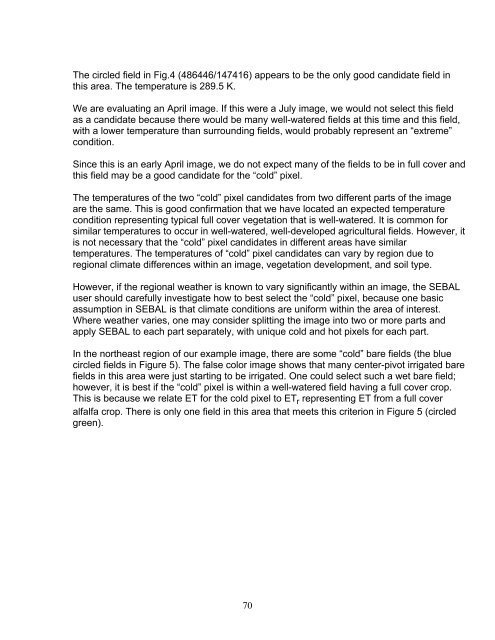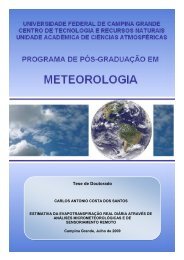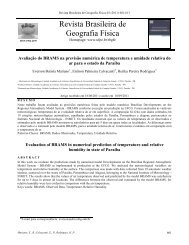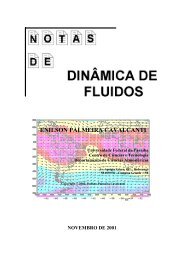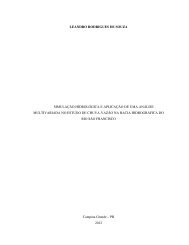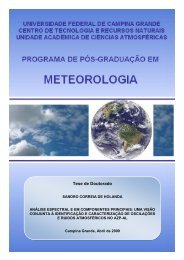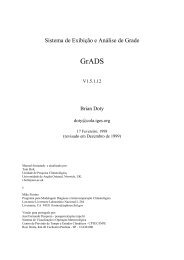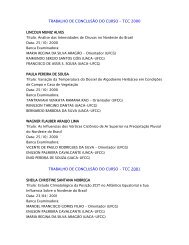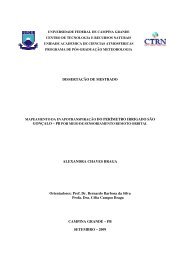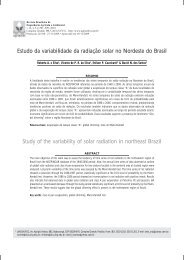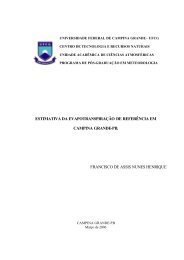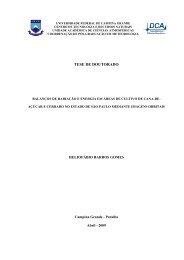Create successful ePaper yourself
Turn your PDF publications into a flip-book with our unique Google optimized e-Paper software.
The circled field in Fig.4 (486446/147416) appears to be the only good candidate field inthis area. The temperature is 289.5 K.We are evaluating an April image. If this were a July image, we would not select this fieldas a candidate because there would be many well-watered fields at this time and this field,with a lower temperature than surrounding fields, would probably represent an “extreme”condition.Since this is an early April image, we do not expect many of the fields to be in full cover andthis field may be a good candidate for the “cold” pixel.The temperatures of the two “cold” pixel candidates from two different parts of the imageare the same. This is good confirmation that we have located an expected temperaturecondition representing typical full cover vegetation that is well-watered. It is common forsimilar temperatures to occur in well-watered, well-developed agricultural fields. However, itis not necessary that the “cold” pixel candidates in different areas have similartemperatures. The temperatures of “cold” pixel candidates can vary by region due toregional climate differences within an image, vegetation development, and soil type.However, if the regional weather is known to vary significantly within an image, the <strong>SEBAL</strong>user should carefully investigate how to best select the “cold” pixel, because one basicassumption in <strong>SEBAL</strong> is that climate conditions are uniform within the area of interest.Where weather varies, one may consider splitting the image into two or more parts andapply <strong>SEBAL</strong> to each part separately, with unique cold and hot pixels for each part.In the northeast region of our example image, there are some “cold” bare fields (the bluecircled fields in Figure 5). The false color image shows that many center-pivot irrigated barefields in this area were just starting to be irrigated. One could select such a wet bare field;however, it is best if the “cold” pixel is within a well-watered field having a full cover crop.This is because we relate ET for the cold pixel to ET r representing ET from a full coveralfalfa crop. There is only one field in this area that meets this criterion in Figure 5 (circledgreen).70


